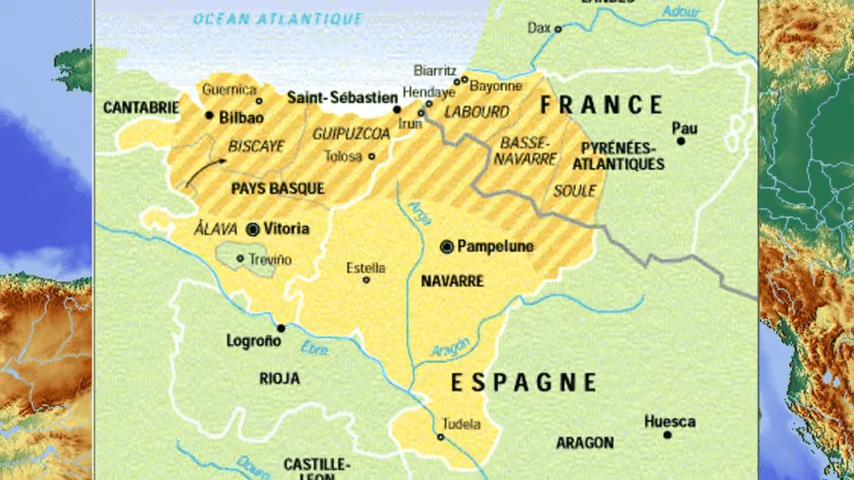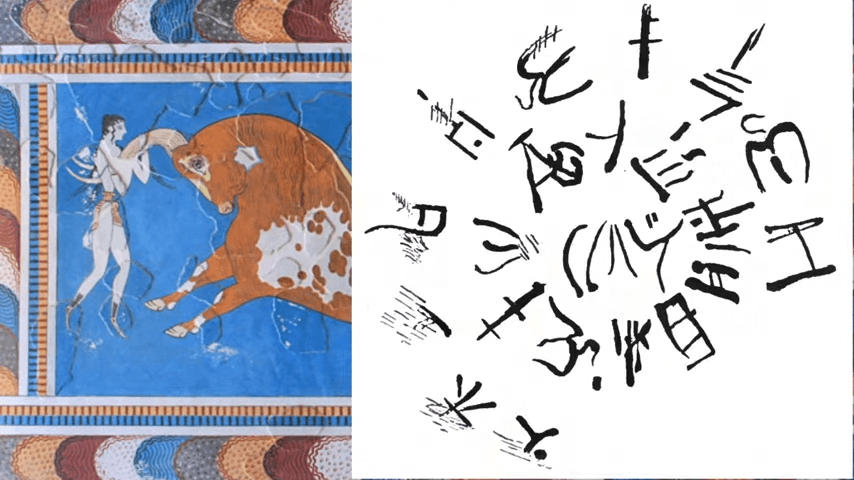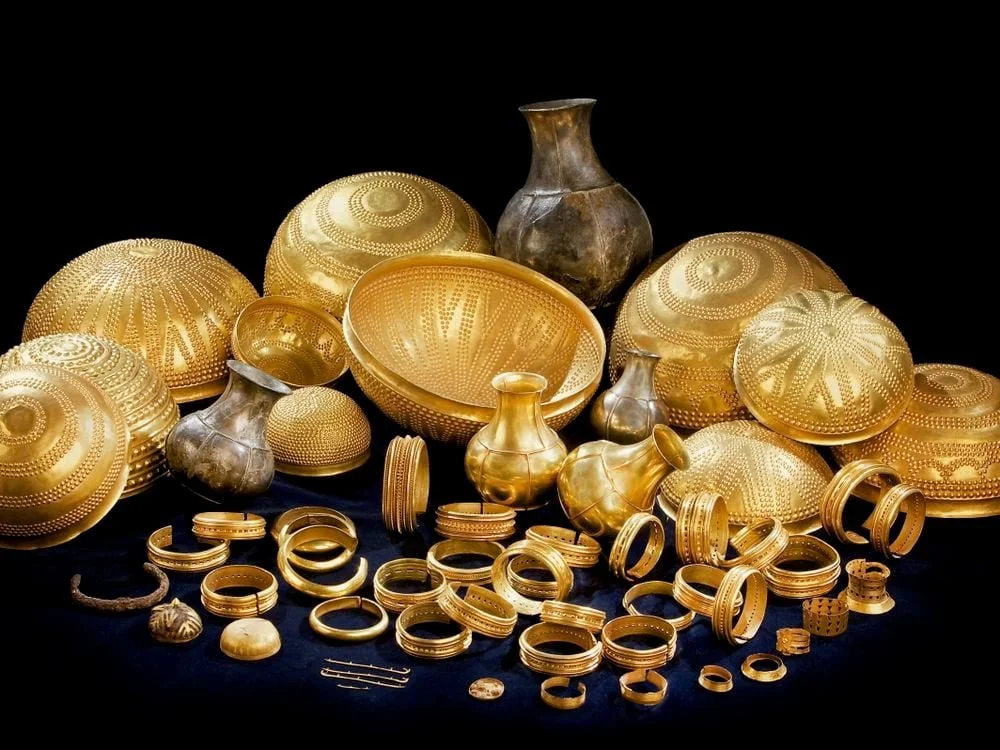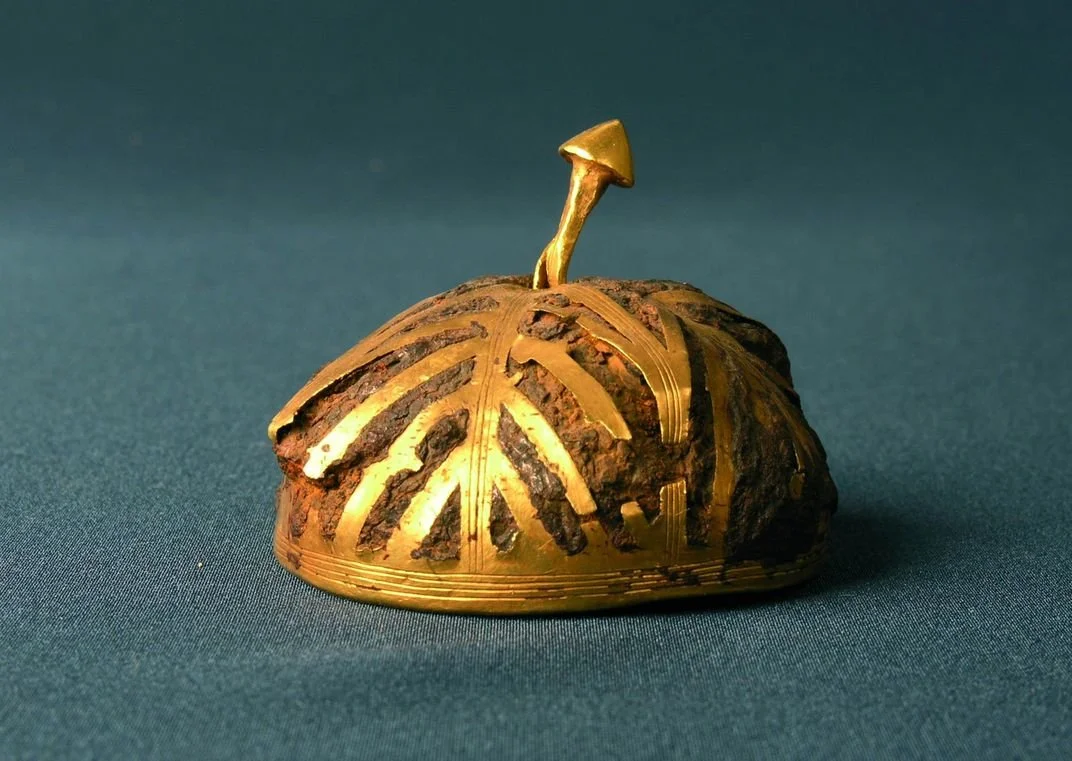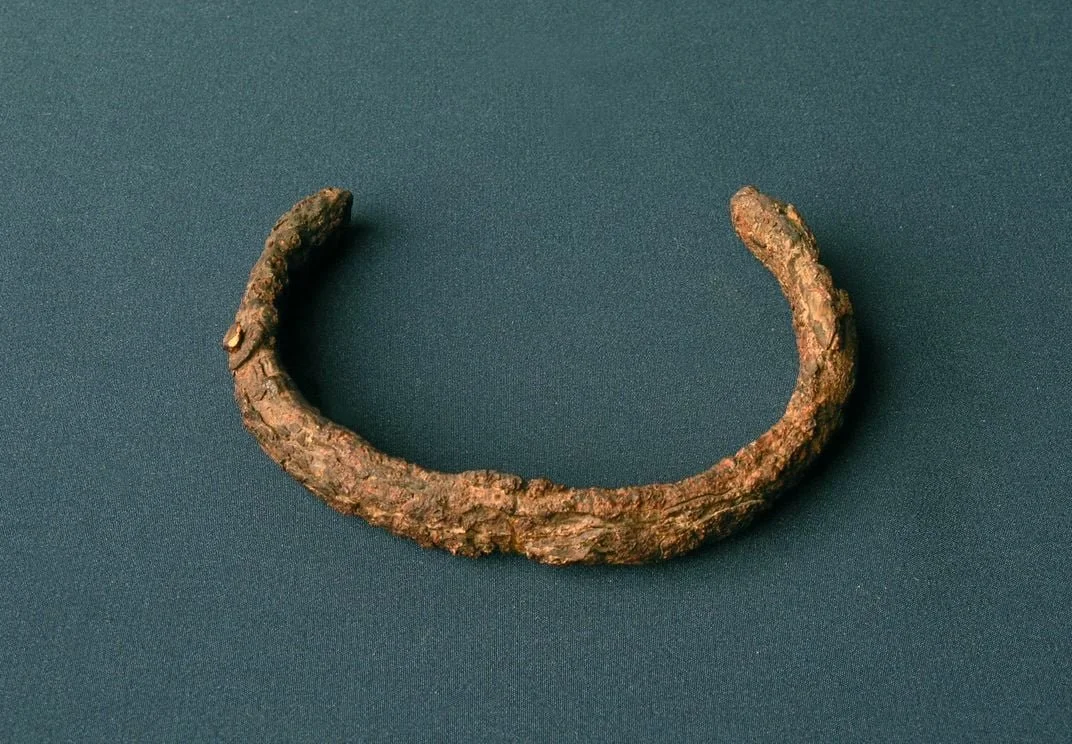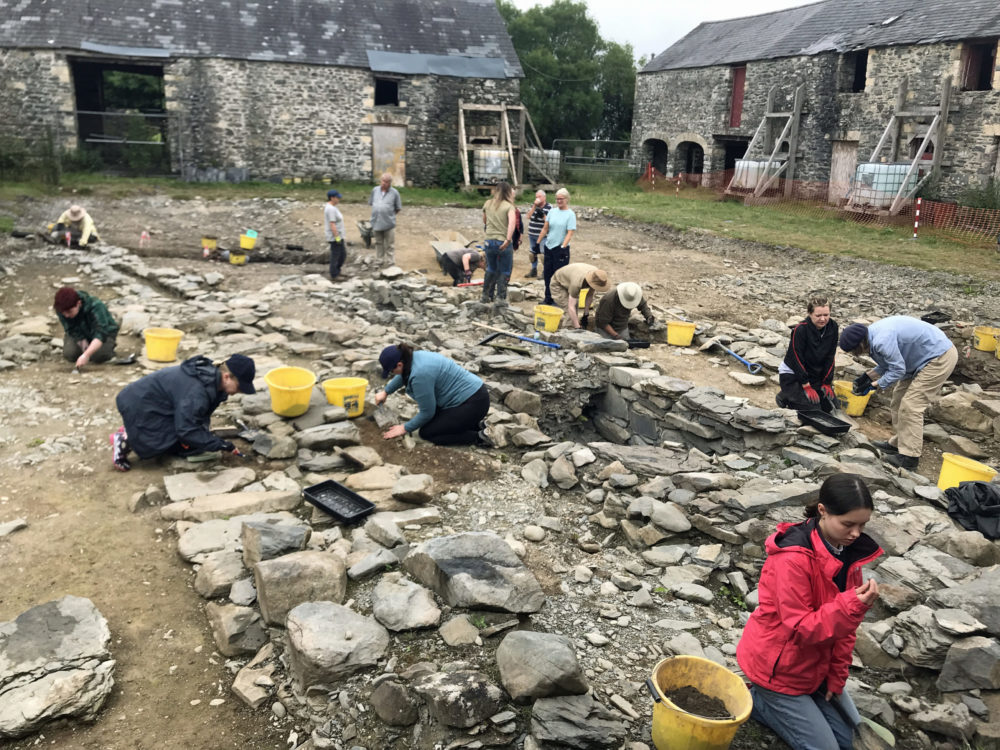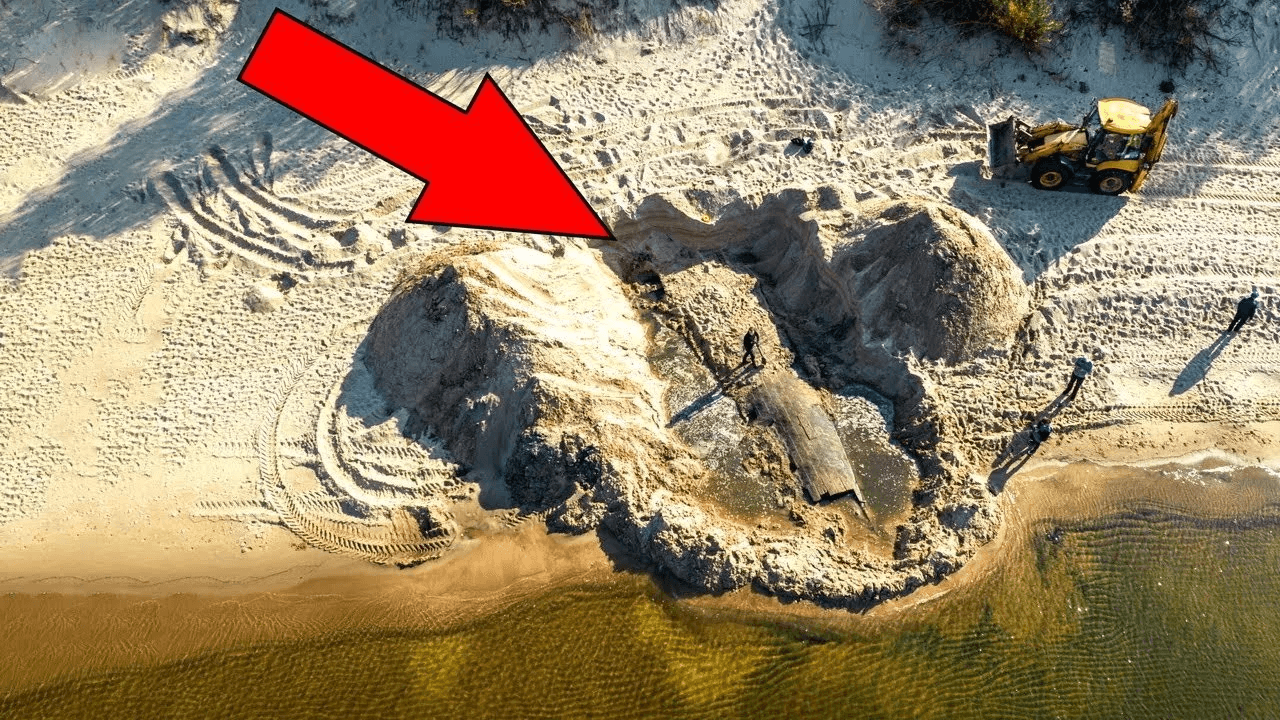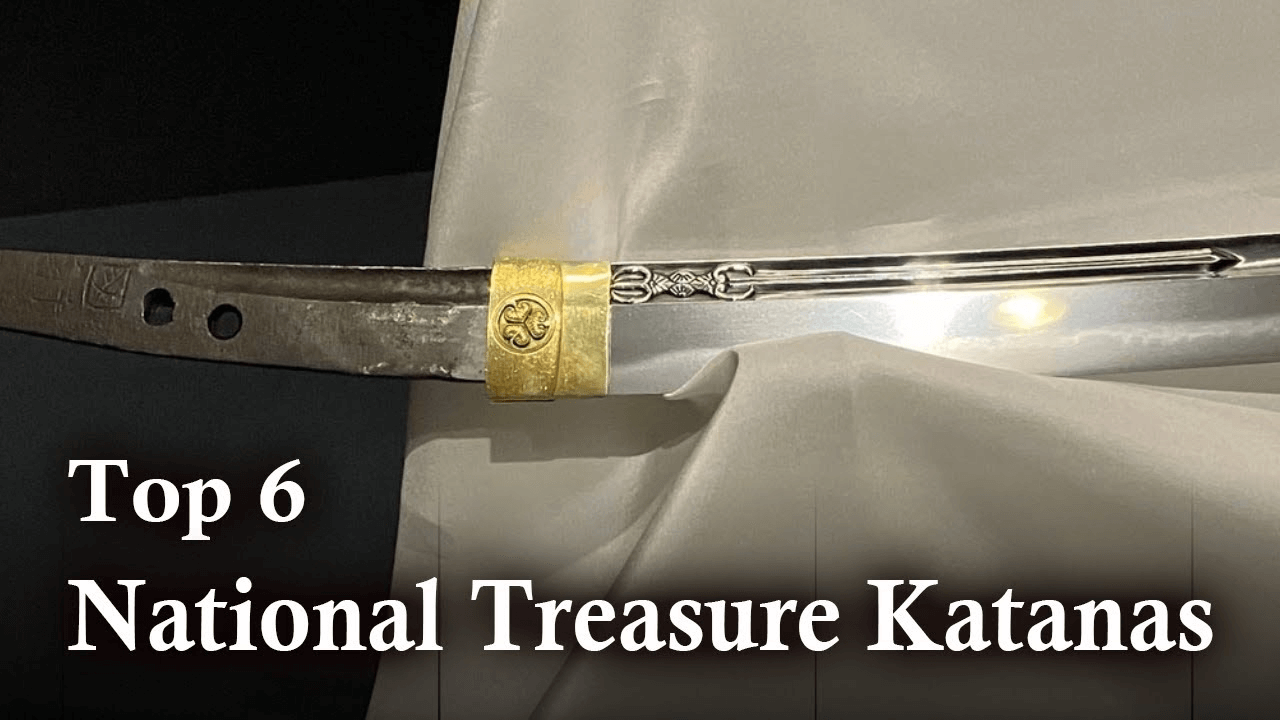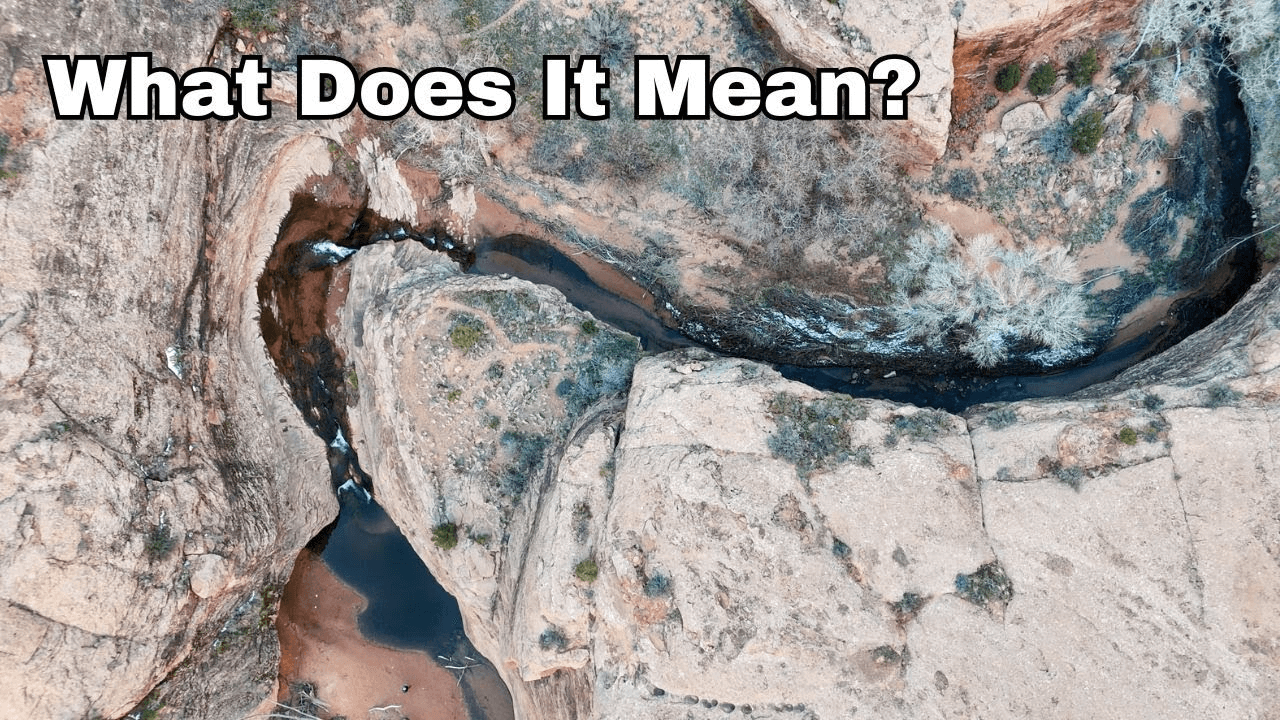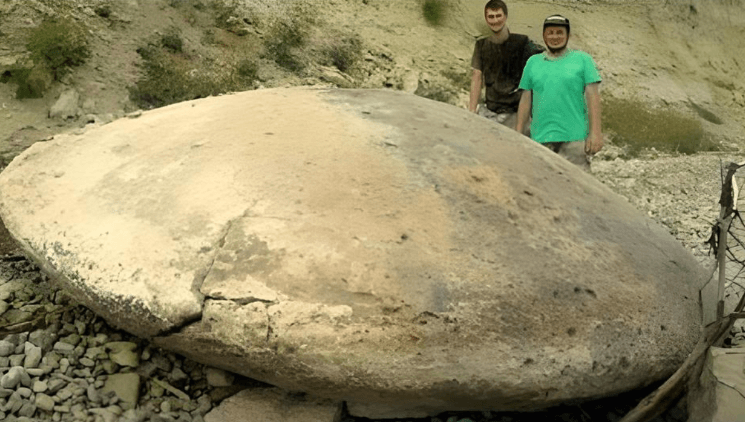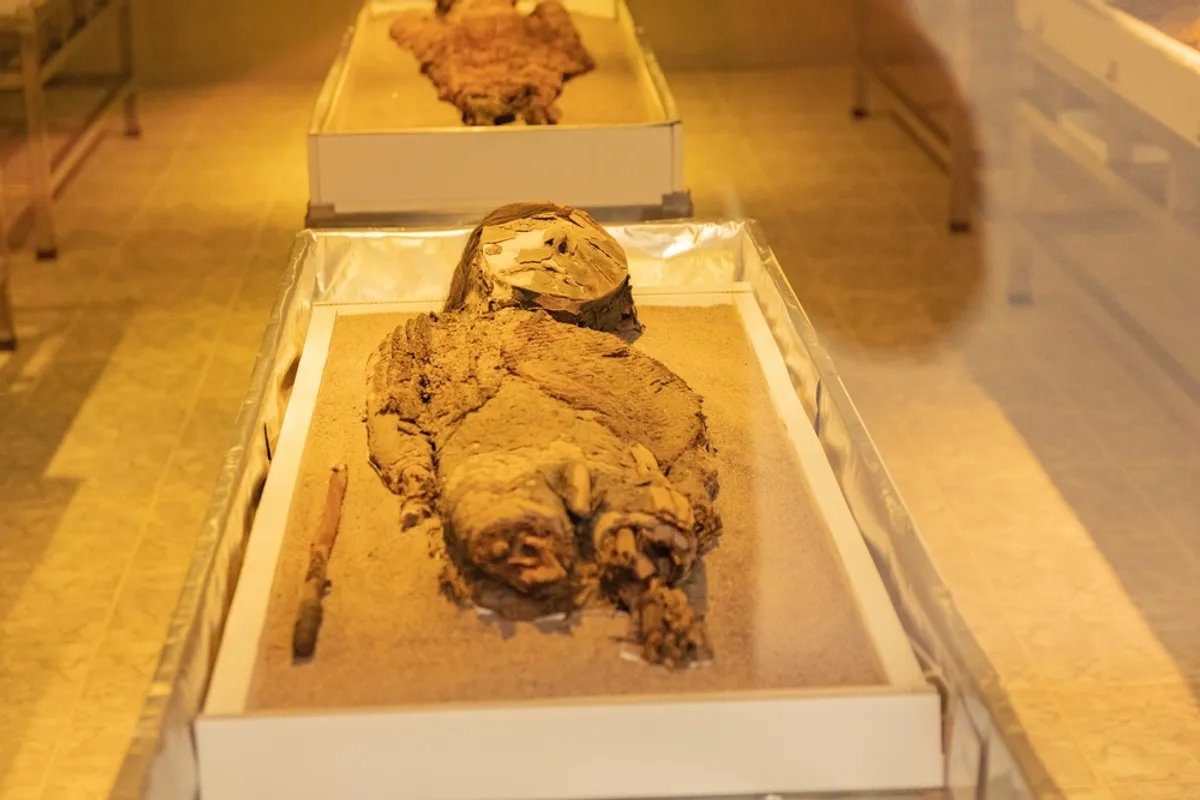In a heartfelt tribute, Palmerston North Boys' High School shares a video showcasing a moving haka performance by the Year 13 cohort. This tradition celebrates their achievements and bids them farewell as they prepare for the next phase of their lives. Principal Sarah Johnson commends the graduates' resilience and encourages them to embrace the future with confidence. The video, resonating with unity and pride, serves as a powerful reminder of the school's spirit and the enduring bonds formed within its halls. As the graduates embark on new journeys, they carry with them the memories and values instilled during their time at Palmerston North Boys' High School.
10 of the RAREST Animals on Earth
In this video, we embark on a journey to uncover some of the planet's most elusive creatures. From the depths of the ocean to the remote corners of the world, these animals captivate with their rarity and uniqueness. Let's delve into the list of these remarkable beings:
Māui Dolphin (Cephalorhynchus hectori maui): With its distinctive markings and diminutive size, the Māui dolphin is a rare gem of New Zealand's coastal waters.
Yangtze Giant Softshell Turtle (Rafetus swinhoei): Found in the murky depths of China's Yangtze River, this ancient species faces the threat of extinction due to habitat loss and pollution.
Ganges Shark (Glyphis gangeticus): Roaming the waters of the Ganges River, this enigmatic shark is a testament to the mysteries of India's sacred waterways.
Lange's Metalmark Butterfly (Apodemia mormo langei): Fluttering amidst the wildflowers of California's central coast, this delicate butterfly enchants with its iridescent wings.
Vancouver Island Marmot (Marmota vancouverensis): Huddled in the alpine meadows of Canada's Vancouver Island, this furry mammal faces a precarious existence due to habitat fragmentation.
Ethiopian Wolf (Canis simensis): Roaming the highlands of Ethiopia, this elegant canid is one of the rarest wolves in the world, with a population teetering on the brink of extinction.
Sulu Hornbill (Anthracoceros montani): Dwelling in the dense forests of the Philippines' Sulu Archipelago, this majestic bird is a symbol of the region's rich biodiversity.
Sakhalin Sturgeon (Acipenser mikadoi): Gliding through the frigid waters of Russia's Sakhalin Island, this prehistoric fish is coveted for its prized caviar, leading to its critically endangered status.
Vangunu Giant Rat (Uromys vika): Skulking through the dense jungles of the Solomon Islands, this elusive rodent was only recently discovered by scientists, adding to the allure of these remote islands.
Belalanda Chameleon (Furcifer belalandaensis): Blending seamlessly into the arid landscapes of Madagascar's Belalanda region, this cryptic chameleon embodies the essence of survival in harsh environments.
As we marvel at the diversity and beauty of these rare animals, let us also reflect on the importance of conservation efforts to ensure their continued existence for future generations to appreciate and cherish.
The Persistence of Non-IE Languages in Southern Europe
In the intricate tapestry of European languages, the predominance of the Indo-European (IE) language family is both profound and extensive, encompassing a vast array of tongues from the Romance languages of the south to the Germanic and Slavic languages of the north. However, nestled within this linguistic landscape are outliers—languages that do not belong to the Indo-European family, yet have managed to persist through the ages, particularly in Southern Europe. Among these, the Basque language, ensconced in the Pyrenees region, stands out as a remarkable enigma, offering a fascinating glimpse into the survival of non-IE languages in an Indo-European-dominated continent.
The survival of non-IE languages in Southern Europe can be attributed to several factors, including their proximity to the literate Mediterranean world. This geographical advantage may have played a crucial role in preserving these languages, as it facilitated interactions with advanced civilizations and cultures, thereby enabling them to maintain their distinct linguistic identities amidst the encroaching Indo-European languages. Additionally, historical migration patterns and cultural assimilation processes have likely contributed to the persistence of these languages, as they adapted and evolved in response to the changing demographic and cultural landscapes of Southern Europe.
Cultural and linguistic changes in ancient Iberia and Northern Europe further elucidate the persistence of non-IE languages. While ancient Iberia witnessed a significant replacement of its male lineage, the continuity of neolithic farmer ancestry ensured the survival of older linguistic elements. Conversely, in parts of Northern Europe, such as Britain, the neolithic population underwent a drastic replacement, possibly due to factors like disease or famine, during the Bronze Age. This stark contrast highlights the varied historical trajectories that influenced linguistic survival in different regions of Europe.
The persistence of non-IE languages in southern Europe is also linked to the survival of old populations in isolated areas. For instance, Minoan, an ancient language that thrived on Greek islands like Crete, and Etruscan, the language of the first mainland Italian civilization, are prime examples of how isolated communities could preserve their linguistic heritage over millennia. These languages not only survived but also influenced subsequent civilizations, demonstrating the resilience and impact of non-IE linguistic traditions.
The influence of local and Mediterranean cultures on non-IE languages in Southern Europe is another factor contributing to their persistence. For instance, Eastern Mediterranean cultures had a significant influence on the Etruscans, who according to some authors, were originally from the East. Similarly, ancient Sardinian languages may contain a pre-Indo-European substratum related to Basque, suggesting the existence of a West Mediterranean language family that has withstood the test of time.
The advanced societies of Bronze Age Sardinians and the possible survival of languages spoken by Neolithic Aegean farmers further underscore the resilience of non-IE languages. The Basque language, in particular, stands as a testament to this enduring linguistic legacy, being the only extant non-Indo-European or Uralic language in Europe today.
The synthesis of pre-Indo-European or proto-Indo-European and Indo-European cultures in southern Europe has played a pivotal role in the survival of older Iberian languages. The assimilation of early Indo-European-speaking newcomers into the pre-existing cultures, coupled with the adaptation of language, facilitated the preservation of these ancient tongues. This synthesis not only ensured the survival of non-IE languages but also enriched the cultural and linguistic diversity of Southern Europe, allowing these ancient languages and cultures to be carried into the historical period.
In conclusion, the persistence of non-IE languages in Southern Europe is a multifaceted phenomenon rooted in geographical, cultural, and historical factors. From the enigmatic Basque language to the ancient tongues of the Minoans and Etruscans, these languages offer a window into the past, revealing the complex interplay between migration, assimilation, and survival. As living relics of Europe's diverse linguistic heritage, they remind us of the enduring power of language to connect us to our ancestors and the stories that shaped our world.
The Treasure of Villena was discovered in Spain's Iberian Peninsula in 1963. El Museo de Villena
Ancient Treasures Crafted from Meteoritic Iron: A 3,000-Year-Old Discovery
The recent revelation that two Bronze Age artifacts from the Treasure of Villena in Spain contain iron from a meteor that struck Earth around a million years ago has captivated archaeologists and scientists alike. Discovered in the 1960s, the treasure trove in Villena has long been admired for its stunning collection of gold and silver items, but the discovery of meteoritic iron artifacts adds a new dimension to its historical significance.
The artifacts under study—a bracelet and a hollow decorative sphere—date back to the period between 1400 and 1200 B.C. Their composition has puzzled researchers for decades, with the presence of a mysterious dark metal noted among the gold items. Now, through the use of mass spectrometry, scientists have determined that the iron in these artifacts closely resembles meteoritic iron, making them the first such artifacts found in the Iberian Peninsula.
The significance of these findings extends beyond mere material composition. The presence of meteoritic iron suggests that the ancient metalworkers who crafted these items were highly skilled and innovative. Iron, a material as valuable as gold or silver during that time, would have required advanced knowledge and techniques to work with, especially given its unique properties compared to more common metals like copper or silver.
One of the iron objects included in the Treasure of Villena El Museo de Villena
The discovery also sheds light on the interconnectedness of ancient cultures. While examples of meteoritic iron artifacts from this period are more commonly associated with eastern Mediterranean cultures, the presence of such items in Spain suggests a broader exchange of knowledge and materials across ancient civilizations.
However, many questions still remain unanswered. The identity of the individuals or community that owned the Villena treasure remains a mystery, as does the exact process by which ancient metalworkers acquired and worked with meteoritic iron. Nonetheless, these discoveries underscore the ongoing importance of archaeological research in uncovering the mysteries of our past and shedding light on the remarkable achievements of ancient civilizations.
An iron bracelet that's part of the Treasure of Villena El Museo de Villena
Excavations of the site at Strata Florida
Archaeologists Believe They've Uncovered a Hidden Celtic Treasure
The recent discovery of a possible Celtic monastery at the site of a 12th-century abbey in Wales has ignited excitement among archaeologists and historians. Located near the Cambrian Mountains by Pontrhydfendigaid village, the site, known as Mynachlog Fawr at the Strata Florida site, has revealed tantalizing clues suggesting the presence of an ancient Celtic religious establishment predating the Cistercian abbey.
The discovery unfolded during refurbishment work on the abbey and farm buildings, with archaeologists uncovering significant features indicative of a Celtic monastery. Among these findings are a major aqueduct and other medieval structures believed to be associated with the ancient monastery.
Analysis of samples from the site using radiocarbon methods has provided intriguing insights into its history. The dates obtained, ranging from 1017 to 1268 AD, suggest the presence of structures pre-dating the establishment of the Cistercian abbey in 1184 AD. This discovery challenges previous assumptions about the site's history and opens up new avenues for research into its early origins.
Carys Aldous-Hughes, director of the local trust overseeing the excavation, emphasized the importance of further exploration to uncover the monastery's original floors and other features associated with its earlier use. This deeper understanding promises to shed light on the site's history before the arrival of the Cistercian monks and provide valuable insights into Celtic religious practices in Wales.
The significance of this discovery is underscored by the historical context of Celtic culture in Wales. Throughout the centuries, the Celtic people of Wales have faced numerous challenges, including invasions and attempts at cultural suppression. The resilience of Welsh language and cultural identity against these adversities is a testament to the enduring spirit of the Welsh people.
As archaeologists continue their investigations at the site, the discovery of the possible Celtic monastery adds another chapter to the rich tapestry of Wales' cultural heritage. It serves as a reminder of the ancient roots of Celtic spirituality and the importance of preserving and celebrating Wales' unique history and traditions.
12 Most Mysterious Archaeological Finds
Archaeologists dedicate their lives to unraveling the secrets of the past, yet some of these mysteries are surprisingly recent in their discovery. Despite their ancient origins, these enigmas have only recently emerged into the light of modern exploration. The journey to deciphering these puzzles can be lengthy and complex, with some answers remaining elusive even after exhaustive investigation. Here, we present a curated selection of recent archaeological mysteries that continue to captivate and intrigue experts in the field.
Most Incredible Recent Discoveries Found By Satellite!
In this video, we delve into the remarkable discoveries made possible through satellite imagery, showcasing the extraordinary finds that have reshaped our understanding of ancient civilizations.
Among these discoveries is the unveiling of a new tomb within Egypt's Sakara necropolis, belonging to P Sheepses, a figure from 4,400 years ago. Although initially unearthed by French scholar AUST Mariette 160 years ago, the tomb remained largely unexplored until recent advancements. The tomb's decorated false door and accompanying artifacts provide a vivid snapshot of Egyptian society millennia ago, offering one of the earliest known biographies and shedding light on ancient governance structures.
In addition to this groundbreaking find, satellite technology has uncovered ancient fortresses in Germany, revealing intricate defense systems dating back thousands of years. Archaeologists, aided by drones, uncovered evidence of silver mining and an elaborate network of wooden towers, showcasing the strategic prowess of past civilizations.
Furthermore, satellite imagery has led to the discovery of Silk Road fortresses in the Afghan desert, highlighting the region's historical significance as a hub of trade and cultural exchange. On a lighter note, the unexpected revelation of Starbucks Island, a remote and uninhabited isle, captivated global attention, demonstrating the power of satellite technology to unveil hidden wonders even in the most unexpected places.
Top 6 National Treasure Katanas / History of Japanese Swords
In modern-day Japan, a wealth of renowned swords from various periods in Japanese history continues to endure. These remarkable blades are carefully safeguarded within shrines, museums, and private collections across the country. Of these, those possessing exceptional historical significance are honored with the prestigious designation of "National Treasure." Presently, Japan proudly acknowledges 122 swords bestowed with this esteemed title, each representing a cherished piece of the nation's cultural heritage.
Intricate Network of Human Life Found on Google Earth
In this video, we delve into the fascinating journey of an explorer who stumbled upon a hidden gem in the desert while scouting for new hiking trails. Intrigued by reports of abundant water sources and caves, the author embarked on a solo expedition to unravel the mysteries of this untouched terrain.
As he ventured deeper into the desert, he stumbled upon ancient remnants etched into the rocks - petroglyphs and pictographs dating back an estimated 800 to 1200 years. The presence of these ancient artworks hinted at a rich cultural history waiting to be uncovered.
Further exploration revealed a concentration of footprints in the canyon, leading the author to speculate about their significance, possibly clan symbols left behind by ancient inhabitants. The area's ecosystem also boasted a thriving population of bighorn sheep, revered by ancient tribes for their symbolic power and strength.
Ascending to a towering alcove, the author stumbled upon evidence of ancient agricultural practices, with numerous grinding areas where grains and corn were processed. Among the intricate rock art, he encountered a captivating depiction of a figure adorned with a necklace, painted in striking hues of blue.
In awe of the area's natural beauty and the depth of its historical tapestry, the author reflected on the privilege of exploring such a rich and complex landscape. Join us as we unravel the secrets of this desert oasis and marvel at the wonders hidden within its rugged terrain.
The Filthy Amusements of Egyptian Pharaohs
In this video, we delve into the lesser-known aspects of ancient Egyptian history, shedding light on the less glamorous truths behind the veil of Pharaonic grandeur. Despite being revered as divine figures, the pharaohs were not immune to human desires and frailties. Polygamy was commonplace among them, with some even resorting to marrying their own siblings in a bid to consolidate power within the royal family.
The corridors of power in ancient Egypt witnessed a dark underbelly, where unchecked authority often led to hedonistic excesses and disturbing practices. From opulent banquets that mocked the struggles of the common people to displays of ruthless power and cruelty, the lives of these god-kings were shrouded in a cloak of extravagance that shocks modern sensibilities.
As we explore the depths of ancient Egyptian society, we uncover scandalous behaviors and taboo practices that challenge our perceptions of this ancient civilization. Join us as we reveal the dirty truths about ancient Egypt, including the prevalence of family inbreeding among the ruling elite, shedding light on a side of history often overlooked in mainstream narratives.
Asking Tribal Elders Life's Big Questions
Mike engages in a conversation with Mpisi, a local traditional healer in Zimbabwe, emphasizing the significance of indigenous knowledge and natural resources for overall well-being. Mpisi passionately encourages individuals to acquire survival skills and cultivate their own sustenance and remedies, aiming to avoid dependence on the external world. He expresses concern that modern civilization can potentially render people vulnerable and less intelligent, pointing out the chemical-laden nature of urban food.
In contrast to city life, Mpisi prioritizes his health and vitality by cultivating his organic produce and incorporating a variety of herbs into his diet. He firmly believes that maintaining harmony with nature is essential for human happiness, contrasting the perceived chaos and lack of consideration in city living. Mpisi advocates for communal cooperation, emphasizing the value of sharing both food and joy with others.
As a devoted naturalist, Mpisi holds the belief that natural resources possess inherent healing properties, while cautioning against the potential harm chemicals may pose to the body. His lifestyle choices reflect a commitment to a holistic approach to health, rooted in a deep respect for the environment and an understanding of the interconnectedness of all living things.
6 Mysterious Historical Discoveries of 2015
In this video, we explore the intriguing encounters historians and archaeologists often have with enigmatic discoveries while delving into historical texts or unearthing ancient remains. Some of the most baffling historical findings and revelations of 2015 include:
A rare metal believed to be from Atlantis was salvaged from a shipwreck off the Sicilian coast. The metal, likely originating from Greece or Asia Minor, was possibly en route to port when it encountered a storm.
Mysterious stone discs, estimated to be around a million years old, were unearthed in Russia's Vrad region. Containing traces of the metal tonson, these discs fuel speculation about extraterrestrial involvement in their creation.
Inside a 1,000-year-old Buddha statue in China, researchers discovered the mummified remains of a monk, possibly indicative of a form of self-mummification practiced by ancient monks.
Thermal irregularities detected within the Great Pyramid of Giza hinted at potential hidden chambers or treasures concealed within its structure, offering tantalizing prospects for further exploration.
Uncovered in the Turpan Basin of northwestern China were approximately 200 mysterious stone circles, potentially dating back as far as 4,500 years, adding to the area's mystique and historical significance.
New evidence suggests that Stonehenge may have had its origins in Wales, challenging previous assumptions about its construction and purpose.
Enjoy!
12 Most Incredible Recent Archaeological Finds
Archaeology offers a wealth of fascination, with recent discoveries holding a special allure. While past findings have garnered extensive scrutiny, the allure of uncovering secrets in recent excavations remains undiminished. Fortunately, the field has witnessed a surge of captivating archaeological revelations in recent years. Below, we delve into some of the most compelling discoveries to date.
The Sumerian Queen's Lyre, The Earliest Lyre Ever Found
The Dawn of Music: The Sumerian Queen's Lyre, a Testament to Ancient Musical Ingenuity
In the annals of musical history, few artifacts hold as much mystique and significance as the Sumerian Queen's Lyre. Discovered in the Royal Cemetery at Ur, this ancient stringed instrument, dating back to approximately 2600 BC, provides a fascinating glimpse into the early development of music and craftsmanship in one of the world's oldest civilizations. This article delves into the discovery, significance, and enduring legacy of this extraordinary piece of ancient history.
Discovery and Historical Context
During his significant excavations at Ur in the 1920s, Sir Leonard Woolley discovered the Sumerian Queen's Lyre. These excavations, which revealed a trove of artifacts, provided an unprecedented insight into Sumerian culture and practices. The lyre, found among other items in what is believed to be a royal burial, is particularly notable for its intricate design and construction.
The Queens Lyre, British Museum
Design and Craftsmanship
The lyre's design is emblematic of the advanced artistic capabilities of the Sumerians. Its most striking feature is the finely crafted bull's head, symbolizing strength and fertility in Sumerian culture. The instrument's body, made from wood, was adorned with intricate inlays of precious materials, such as lapis lazuli, shell, and red limestone, creating a visually stunning artifact.
Musical Significance
As one of the earliest known stringed instruments, the Sumerian Queen's Lyre offers valuable insights into the musical traditions of ancient Sumer. Its discovery suggests that music played a significant role in Sumerian society, potentially used in religious rituals, royal ceremonies, or as a form of entertainment. The lyre's design also provides clues about the evolution of musical instruments and the origins of string-based music.
Preservation and Display
After its discovery, the lyre underwent extensive restoration, as it was found in a decayed state. Today, it resides in the British Museum, serving as a key exhibit and attracting scholars and enthusiasts from around the world. Its preservation allows contemporary audiences to connect with an aspect of Sumerian culture that would otherwise have been lost to time.
Bull's head of the Queen's lyre from Pu-abi's grave, PG 800, at the Royal Cemetery at Ur, Southern Mesopotamia, Iraq. British Museum, Osama Shukir Muhammed Amin FRCP(Glasg) - Own work
the World's Oldest Stringed Instruments in the Lyres of Ur
Few discoveries have captured the imagination of historians and music enthusiasts alike as profoundly as the Lyres of Ur. These remarkable string instruments, unearthed from the Royal Cemetery at Ur in modern-day Iraq, stand as silent witnesses to the dawn of musical expression in human civilization.
The Lyres of Ur are hailed as the world's oldest surviving stringed instruments. Strictly speaking, the collection comprises three lyres and one harp, although they are commonly referred to as lyres. Following meticulous restoration efforts, the instruments found their homes in prestigious museums across the globe. The "Golden Lyre of Ur," also known as the "Bull's Lyre," takes pride of place in the Iraq Museum in Baghdad. Its resplendent golden bull head, adorned with inlaid nacre and lapis lazuli, speaks to the exquisite craftsmanship of its creators. Meanwhile, the "Bull-Headed Lyre" in the Penn Museum, Philadelphia, with its gold foil-wrapped features, pays homage to the Mesopotamian reverence for divine symbolism.
The Queen's Lyre and the Silver Lyre, from the Royal Cemetery at Ur, southern Mesopotamia, Iraq, British Museum, London. Osama Shukir Muhammed Amin FRCP(Glasg) - Own work
The saga of the Lyres of Ur extends beyond mere archaeological significance; it intertwines with poignant tales of human connection. Leonard Woolley's excavation revealed the lyres nestled among the skeletal remains of ten women, suggesting their ceremonial use in burial rituals. One poignant discovery recounts a skeleton found resting against a lyre, its hand seemingly poised where the strings once resounded.
A lyre, by definition, is a stringed instrument characterized by a projection from the body. In order to play the lyres of Ur, specifically box lyres, one must stand upright and pluck the strings with both hands. With eleven strings each, these instruments produced a distinctive buzzing noise, likely accompanying songs performed during burial ceremonies.
The Sumerian Queen's Lyre is not just an artifact; it is a bridge to our shared human past. Its strings, though silent for millennia, still resonate with the ingenuity and artistic spirit of the people who created it. As one of the oldest known musical instruments, it continues to inspire and enlighten, reminding us of the universal language of music that transcends time and culture. The journey of the Lyres of Ur resonates with contemporary audiences across the globe.
Valle Dei Templi: A Journey Through Ancient Greece
Nestled near the sun-kissed shores of Sicily's southern coast, the Valle Dei Templi beckons travelers on a journey through time—a captivating testament to the enduring legacy of ancient Greece in the heart of Italy.
Designated as a UNESCO World Heritage site, the Valley of the Temples stands as a majestic tribute to the grandeur of Greek civilization in Southern Italy. Just beyond the bustling city of Agrigento, this archaeological marvel unfolds, revealing a panorama of exquisitely preserved ancient Greek temples.
But the Valle Dei Templi is more than a mere collection of ancient ruins; it is a living testament to Sicily's rich cultural heritage. Each year, thousands of visitors are drawn to its storied landscape, enraptured by the echoes of a bygone era when this land thrived as a vibrant hub of Greek civilization.
Stepping into the valley, visitors are transported back in time, wandering amidst the awe-inspiring remnants of temples dedicated to the gods and goddesses of the Greek pantheon. The site's strategic location offers sweeping vistas of the surrounding countryside, enhancing its allure and inviting contemplation of ancient splendor.
For those versed in Sicily's history, the significance of the Valle Dei Templi is unmistakable. It stands as a poignant reminder of the island's storied past—a testament to the enduring influence of ancient Greece on its cultural landscape.
The History of the Valley of the Temples
Founded in the 6th century BCE by Greek colonists, the ancient city of Akragas flourished as a beacon of Greek civilization in Magna Graecia. It was during this era of prosperity that the temples of the Valle Dei Templi were erected, symbols of the city's devout religious practices and architectural prowess.
Among the valley's most iconic structures is the Temple of Concordia, a masterpiece of Doric architecture dating back to the 5th century BCE. Its pristine preservation offers a glimpse into the ingenuity of ancient Greek craftsmanship, while nearby, the Temple of Hera stands as a testament to the enduring spirit of Greek devotion.
Further afield, the Temple of Heracles and the Temple of Olympian Zeus bear witness to the island's tumultuous history, their weathered columns standing as silent sentinels to a bygone era of glory and conquest.
Visiting the Valley of the Temples Today
Today, the Valle Dei Templi welcomes visitors from around the world, offering a journey of discovery through the annals of ancient history. Amidst the fragrant citrus groves and wildflower-strewn hillsides, travelers can explore the remnants of a civilization that shaped the course of Western thought and culture.
Guided tours and informative exhibits provide invaluable insights into the valley's rich heritage, while the surrounding landscape offers a serene backdrop for contemplation and reflection.
As the sun sets over the valley, casting its golden glow upon the ancient stones, one cannot help but marvel at the enduring legacy of the Valle Dei Templi. It is a testament to the enduring power of human creativity and ingenuity—a timeless reminder of the splendor of ancient Greece amidst the rolling hills of Sicily.
An ancient bronze hand found at Irulegi in northern Spain
Juantxo Egana
Deciphering an Ancient Enigma: The Irulegi Hand's Linguistic Mystery
In the heart of the Pyrenees, nestled amidst the rugged terrain of northern Spain, lies a relic that has sparked intrigue among archaeologists and linguists alike—a 2000-year-old bronze hand adorned with inscriptions shrouded in mystery.
Unearthed in July 2021 atop the hill of Irulegi, this enigmatic artifact offers a tantalizing glimpse into the ancient past. Initially discovered amidst excavations of a medieval castle, the hand's origins trace back even further to a bygone settlement from the Iron Age, dating between 1500 and 1000 BC.
Measuring 14 centimeters in length, 12.8 centimeters in width, and a mere 0.1 centimeters thick, the bronze hand bears cryptic inscriptions etched into its surface—a testament to an ancient language lost to the sands of time.
Among the inscriptions, one word stands out: "sorioneku," a term reminiscent of the Basque word "zorioneko," meaning "of good fortune." Could this linguistic parallel unlock the secrets of the Basque language's origins, long shrouded in mystery?
While some scholars, like Mattin Aiestaran of the University of the Basque Country, see compelling similarities between the Irulegi inscriptions and Basque vocabulary, skepticism lingers among the linguistic community. Céline Mounole and Julen Manterola, prominent linguists, caution against hasty conclusions, citing the scant evidence and the complexity of linguistic analysis.
Indeed, the challenge lies in the limited corpus of words inscribed on the bronze hand, leaving researchers grasping for more substantial comparisons with known languages. The tenuous link between "sorioneku" and "zorioneko" offers but a glimpse into a linguistic puzzle fraught with uncertainty.
The Irulegi hand, bearing an inscription in a mysterious language
Mattin Aiestaran, et. al.
Nevertheless, the implications are profound. If the inscriptions indeed herald a language related to Basque, it could rewrite the narrative of Europe's linguistic landscape, challenging long-held assumptions about linguistic evolution and cultural heritage.
As the debate rages on, fueled by academic scrutiny and scholarly curiosity, one thing remains clear—the Irulegi hand holds the key to a linguistic enigma that transcends time and borders. With each inscription unearthed and each word deciphered, the ancient past beckons, inviting us to unravel its mysteries and uncover the rich tapestry of human history hidden within.
Chinchorro mummies look a little different to their more famous Egyptian counterparts.
Image credit: cristianzenon/Shutterstock.com
Unveiling Chile's Ancient Mummies: A Treasure Trove Predating Egypt's Pharaohs
While the mystique of Egypt's mummies captivates the world, nestled within Chile's Atacama Desert lies an even older secret—the mummified remains of the Chinchorro people, dating back a staggering 7,000 years.
When thoughts drift to mummification, Egypt's elaborate rituals often take center stage. Yet, it's the Chinchorro people who pioneered this ancient practice, establishing their legacy as the earliest practitioners of mummification on Earth.
Originating around 5450 BCE, the Chinchorro thrived as a maritime society along the coasts of modern-day Chile and Peru. Their groundbreaking funerary customs, entombing their deceased in the arid desert sands, set them apart as innovators in the realm of preservation.
Today, these ancient burial sites stand as UNESCO World Heritage sites, offering a window into a civilization long past. Unlike Egypt's exclusivity in mummification, the Chinchorro extended this reverence to all members of their community, symbolizing a profound cultural ethos.
So, how did the Chinchorro achieve their remarkable preservation? Unlike the Egyptians' intricate embalming processes, Chinchorro mummification involved meticulous skinning and organ removal, followed by reapplication of the skin and elaborate wrappings. Clay masks adorned their faces, complemented by human hair wigs, ensuring a dignified passage into the afterlife amidst the desert's embrace.
The journey to uncover these ancient relics began in 1917 when Max Uhle stumbled upon the first Chinchorro mummy on a windswept beach. Carbon dating techniques later confirmed their antiquity, sparking a fervent quest for more discoveries.
Over a century later, hundreds of mummies have emerged from the desert's embrace, some unearthed by the relentless march of urbanization, others by the curious noses of wildlife. In Arica, where the Chinchorro legacy lives on, these ancient inhabitants are not just relics but integral threads in the fabric of local heritage.
However, the specter of climate change now looms large, threatening to unravel the delicate balance between preservation and decay. Rising temperatures and erratic weather patterns expose these ancient graves to the ravages of time, prompting urgent calls for preservation efforts.
As leading expert Bernardo Arriaza laments, museums grapple with an overwhelming influx of artifacts, while the mummies themselves face new perils within their climate-controlled confines.
Yet, amidst these challenges, a beacon of hope emerges—a state-of-the-art museum, poised to safeguard these ancient treasures for generations to come. With a price tag of $19 million, this climate-controlled sanctuary near Arica promises to shield the Chinchorro mummies from the ravages of time, ensuring their legacy endures.
In the heart of Chile's desert sands, a timeless tale unfolds, where ancient mummies stand as silent sentinels to a bygone era, beckoning us to preserve their legacy for the ages.
Historical Discovery: Lost Village Revealed During Forestry Operation on Isle of Skye
A remarkable archaeological discovery has emerged on the Isle of Skye as the remnants of a lost village, believed to date back to the 17th or 18th century, were unearthed during a specialized forestry operation.
Twenty eight buildings were recorded by AOC Archaeology's survey. Pic: Forestry and Land Scotland © Other
Nestled in Glen Brittle, the site, known as Brunell, lay obscured beneath a dense Sitka spruce plantation planted in 1977, until Forestry and Land Scotland (FLS) commissioned an archaeological survey ahead of the tree harvesting.
This once-thriving settlement, adorned with houses, byres, barns, and corn-drying kilns, had a bustling community of approximately 2,250 individuals engaged in farming activities, including cattle, sheep, and horses, to sustain their livelihoods.
However, historical records indicate a decline in population over time, with census data revealing a gradual decrease to 1,769 inhabitants before the village's ultimate abandonment. It is speculated that the shift towards consolidating smaller farms into larger grazing areas for sheep played a role in the village's decline and eventual abandonment.
FLS, in collaboration with AOC Archaeology, meticulously surveyed the area, documenting 28 buildings, some of which had been concealed by windblown trees over the years. The findings guided the careful planning and execution of the tree-felling operation, with measures in place to safeguard the historic ruins from damage.
Pic: Forestry and Land Scotland© Other
As a result, cleared areas now reveal some of the uncovered buildings, while others remain nestled beneath the forest canopy, preserving the rich history of this lost village for future exploration and study.
This remarkable discovery sheds new light on the island's past and underscores the importance of preserving and uncovering its hidden treasures for generations to come.
Adam Savage Meets Real Ancient Swords!
In this captivating video, we join Adam on a thrilling journey through the hallowed halls of the Metropolitan Museum of Art's Arms and Armor conservation lab. Previously, he experienced the awe-inspiring sensation of touching historical armor, embodied by the formidable armored gauntlets. Now, in a momentous return, associate conservator Sean Belair bestows upon Adam yet another unparalleled privilege: an intimate encounter with a collection of period swords tracing their lineage back to the 13th century.
With bated breath and trembling anticipation, Adam steps into the realm of antiquity, where each blade resonates with the echoes of centuries past. As he delicately cradles these relics of bygone eras, he becomes immersed in the rich tapestry of history, tracing the evolution of craftsmanship and martial prowess through the ages.
In this extraordinary experience, Adam not only beholds these venerable weapons but also becomes an active participant in their narrative, forging a visceral connection with the past. With each sword he handles, he embarks on a voyage of discovery, unlocking the secrets of their design, construction, and the hands that once wielded them in battle.
Through the expert guidance of Sean Belair and the Metropolitan Museum's dedication to preserving cultural heritage, Adam's encounter transcends mere observation, evolving into a profound communion with the essence of history itself. As he bids farewell to these storied blades, he carries with him a newfound reverence for the legacy they represent, forever enriched by this extraordinary journey through time.
Unearthed: Dead Sea Scrolls - The Dark Truth
The serendipitous discovery of the Dead Sea Scrolls in 1946 by a Bedouin in desert caves unveiled a treasure trove of ancient texts dating back to the time of Jesus Christ. These venerable scrolls, revered as the oldest biblical manuscripts in existence, find their sanctuary within the hallowed confines of the Shrine of the Book at the Israel Museum, drawing nearly a million pilgrims annually to behold their sacred wisdom.
For seven decades, scholars have been enraptured by the enigmas enshrouding these scrolls. Who penned them? What impelled their concealment in the desert's embrace? Do they portend a cataclysmic apocalypse? These questions have fueled scholarly discourse and captivated imaginations.
Pioneering advancements in multispectral imaging technology have unveiled latent layers of meaning within the text, offering unprecedented insights into their cryptic contents. Through the lens of the Scrolls, a radiant illumination is cast upon the milieu of Jesus' Judaism and the nascent stages of Christianity, illuminating the intricate tapestry of faith and tradition.
Yet, amidst the revelations, a veil of mystery persists. Dr. Eshbal Ratzon and an international consortium of scholars embark on a quest to decipher fragmented scrolls, seeking elusive clues to unravel the secrets of their authorship and clandestine concealment. These fragments stand as silent sentinels guarding the untold narratives of antiquity, beckoning humanity to peer beyond the veil of time and uncover the mysteries that lie within.




